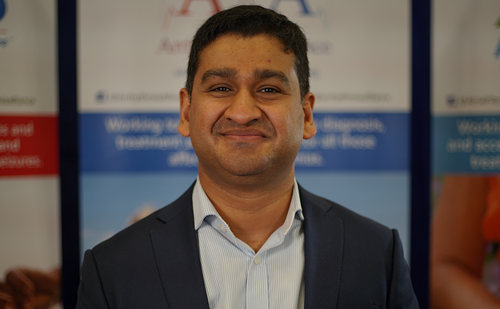Supraventricular tachycardia (SVT) is an important cause of intrusive palpitation symptoms. This expert interview explores a nurse-led end-to-end pathway for the diagnosis, assessment and management of this condition. It was conducted at the Barts Heart Centre of Barts Health NHS Trust in the UK.
Q. What are the current challenges and unmet clinical needs in supraventricular tachycardia diagnosis, assessment and management?
With an estimated prevalence of 2.25 per 1000 persons, a subset of patients presenting with palpitations or associated symptoms will have paroxysmal SVT.1 SVTs can not only cause intrusive symptoms, it can also be potentially life threatening in a small percentage of patients with atrial fibrillation and pre-excitation.
The first challenge is SVT diagnosis, which is made by obtaining an electrocardiogram (ECG) tracing during an episode. Where the episodes are short and self-terminating, it would not be possible for patients to present to a healthcare facility in time to have a 12-lead ECG recorded. In patients with infrequent episodes, ambulatory ECG monitoring would also be unlikely to capture an episode. The recent development of mobile devices capable of recording ECGs has been a game changer in allowing patients to record an ECG trace during symptomatic episodes.
Once SVT is diagnosed, the priority is then risk stratification. This is done by a obtaining a careful clinical history, performing a 12-lead ECG, and any further investigations including an echocardiogram, an exercise test or a Holter monitor test where indicated. A further challenge in the pathway is obtaining timely access to the correct investigations.
In the majority of patients where the condition is considered to be benign, management is guided by symptoms. In all patients, having a clear explanation of the diagnosis is of utmost importance since a major cause of distress in this patient population is due to not knowing the cause of their symptoms and whether it is dangerous or not. Lifestyle advice should be provided and patients should be taught how to perform a vagal manoeuvre, which also includes the Valsalva manoeuvre and is an action the patient can do to stop SVTs. In patients with infrequent non-intrusive symptoms, these measures are often all that is necessary.
Finally, in a subset of patients, an electrophysiological (EP) study followed by a catheter ablation procedure would be the most appropriate treatment plan. This is a curative treatment in the majority of cases, and indicated where the symptoms are troublesome and intrusive, or where there are red flags suggesting the condition may be dangerous. There is a significant unmet need to ensure that patients with SVT have access to this in a timely manner.
Q. Please provide an overview of the nurse-led, end-to-end pathway for supraventricular tachycardia, and the rationale behind the study.
The nurse-led, end-to-end pathway was envisaged as a “one-stop shop” for diagnosis, assessment and management of SVT in patients with a suspected heart rhythm diagnosis.2 There are three key elements to the service.
Firstly, the service is run by arrhythmia nurse specialists. We are fortunate to have highly experienced and skilled nurse specialists who have worked in the field of heart rhythm care for many years. The arrhythmia nurse specialists have access to heart rhythm specialist consultants where necessary to advise on any aspect of care.
Secondly, there are provisions for same day investigations that would include a 12-lead ECG and echocardiogram. In the majority of cases, this is sufficient in conjunction with a clinical history to provide reassurance to patients that their SVT condition is benign; patients may be discharged at this point with the appropriate advice, thereby providing a “one-stop shop” experience.
Finally, the pathway is end-to-end, which means that patients are placed directly on the waiting list for an EP study followed by a catheter ablation procedure without the need for further intermediate steps. Patients are then followed up post procedure and given access to phone and email advice services for as and when required.
The rationale behind this study was to determine the impact of this pathway on the management of patients with SVT.
Q. What was the study design, eligibility criteria and methodology?
This was a retrospective analysis of a clinical service of all patients who came through the pathway from 1 January 2019 to 31 December 2022 via a referral. The data were prospectively recorded on a spreadsheet as part of clinical service.
Q. Please provide an overview of the key outcomes of the study.
The study included 1,363 patients with 63% having been referred from within the Barts Health NHS Trust (the majority being from the emergency department or acute care team) and the remainder from primary care. The median time from referral to appointment with an arrhythmia nurse specialist was 38 days, with an interquartile range of 23–54 days.
Of the 1,363 patients, 12% had a diagnosis of SVT: the majority of these patients (61%) were discharged after a single visit with advice provided and any suggested medication prescribed if required; some patients (28%) were directly listed to have an EP study followed by a catheter ablation procedure; and a small number of patients (11%) required onward referral to see a cardiologist or other specialists (Figure 1).
Figure 1: An arrhythmia nurse-led, end-to-end pathway for patients with supraventricular tachycardia, findings of a study conducted at Barts Health NHS Trust

Q. What conclusions can be made, and how might this innovative pathway impact future diagnosis, assessment and management of supraventricular tachycardia?
From the findings of this study, it can be concluded that an arrhythmia nurse-led, end-to-end pathway can enable a streamlined patient journey with the majority of patients with SVT being discharged after a single clinical encounter. This model of care can help address the challenges of work force, and timely access to investigations and management for patients with SVT.







